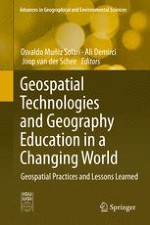2015 | OriginalPaper | Buchkapitel
2. Digital Geography Education in the Twenty-First Century: Needs and Opportunities
verfasst von : Joop van der Schee, Henk Trimp, Tine Béneker, Tim Favier
Erschienen in: Geospatial Technologies and Geography Education in a Changing World
Verlag: Springer Japan
Aktivieren Sie unsere intelligente Suche, um passende Fachinhalte oder Patente zu finden.
Wählen Sie Textabschnitte aus um mit Künstlicher Intelligenz passenden Patente zu finden. powered by
Markieren Sie Textabschnitte, um KI-gestützt weitere passende Inhalte zu finden. powered by
